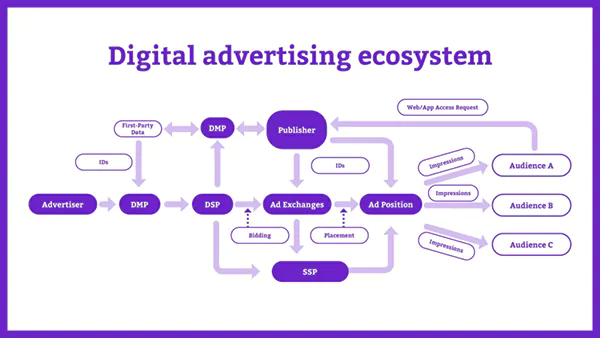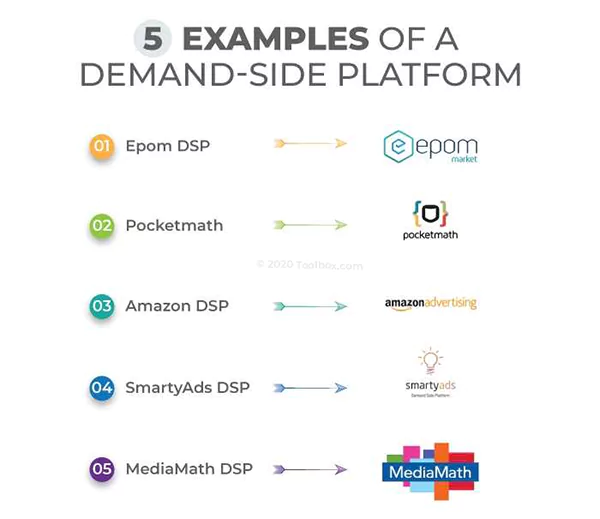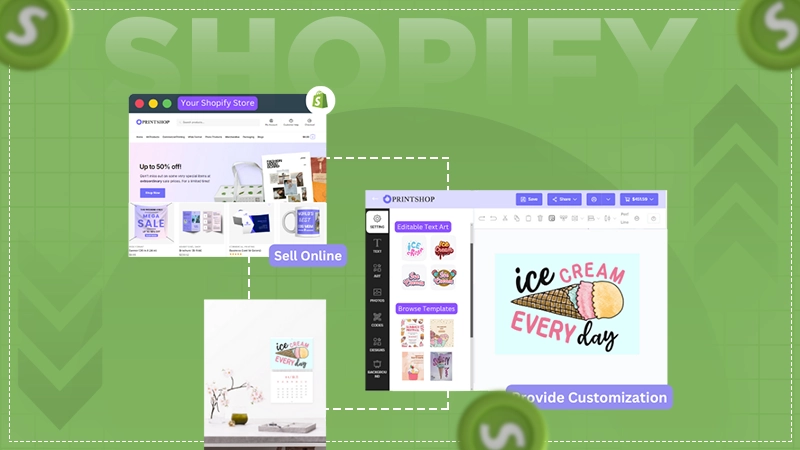Why Do Businesses Need DSPs?
Digital advertising involves many time-consuming tasks such as Ad bidding and purchasing and that’s where Demand-side platforms (DSPs) work as an alternative to streamlining advertising management campaigns for many businesses.
In this read, we will delve into the complexities of why DSPs matter. and how they work. Also, learn about Social Media Marketing Tips For Small Businesses with this guide.
What Is DSP?
DSPs collect and analyze large volumes of anonymized data about the behavior of users of Internet resources. They use algorithms and machine learning technologies to determine which users are potentially interested in ads on a certain topic.
After analyzing the data, the platform selects the most suitable audience, as well as the optimal time and place to publish a video, banner, or ad. It automatically purchases placement sites through SSP and Ad Exchange and then displays advertising to the target audience.
DSPs combine all the tools that work with different platforms or sites to display advertising. Their main task is to purchase and display ads at the optimal price per advertiser request. They can work with different types of advertising – banners, videos, creatives in mobile applications, and native integrations.
How do Advertising Management Systems Work?

DSPs purchase advertising through a special real-time auction called RTB. The system starts bidding between advertisers and compares their bids to determine who will receive the right to display.
The task of the ads management system is to calculate the optimal price for an ad, and then place a bid on time, literally in a second – at an auction, everything happens very quickly. The advertiser who offers the best bid gets the opportunity to display their ad.
To understand how users interact with advertising, the platform analyzes cookies. This helps users more precisely target ad impressions. The customer analyzes the results, selects the target audience he wants to attract, and allocates a budget for each impression.
DSP has 5 options for target audience search:
- By sites. This is convenient if you need to show ads in a certain context or respond to a user request from a certain site.
- By geolocation. The DSP makes a bid when it receives a request from a user in a certain city. The location is determined by IP.
- By segment. Ads are displayed for certain categories of users, for example, for unmarried men under the age of 30. DSPs purchase anonymized user data from data management platforms (DMPs)
- By frequency of impressions. If a person has not completed an action after several impressions, the DSP stops spending advertiser money on impressions for that user.
- Retargeting. The system shows personalized advertising to a user who has already interacted with the advertiser, based on his previous actions.
- Some DSPs provide predictive optimization algorithms. This algorithm calculates the CTR (Click-through rate) for each request from the SSP (Sell-side platform) and each advertising campaign to determine the likelihood of conversion. It can be combined with any of the listed targeting methods.
Hypothetically, a marketer or traffic manager can do this manually – analyze the results of an advertising campaign, change the target, and calculate the bid. In a small company, the amount of work may be insignificant; a small business can easily do without a predictor.
In media holdings and companies with an extensive product line, manual data processing requires too much time and money. And despite all the investments, you will have to take into account the human factor and the likelihood of error.
Why Does a Business Need a DSP?

Here’s how using a DSP can help a business:
- Saves time on purchasing and managing advertising campaigns. The platform allows marketers to work with different networks and formats simultaneously, increasing audience reach and increasing the effectiveness of ad campaigns
- Provides transparency and control over budgets. Allows you to manage bids, and total expenses, and see the results of your campaigns in real-time.
- They provide reports on advertising activity: the customer receives information about how the ad was shown, what data was used for targeting, and what results were achieved.
- They allow you to compare results from different platforms that were used for promotion.
- They help monitor the composition of the target audience to accurately segment it.
- They collect detailed statistics on interaction with consumers and predict the effectiveness of advertising campaigns.
Did You Know?
According to Market Study Report LLC, the demand-side platform market will increase its annual revenue from $9.7 billion in 2019 to $31.3 billion in 2024.
How to Choose a DSP

Finding an ad management system across all the different tools can be challenging, especially if this is your first time using a DSP (demand-side platform).
Here are the criteria you should focus on when choosing:
- Is it possible to integrate with other marketing tools – DMP, and advertising accounts?
- Is there a predictor in the system?
- How well customer and technical support work.
- Display format: desktop or adapted for mobile devices.
- QPS (queries per second). The more clients you have, the higher the load on the system will be.
- Developer reputation. make sure that the system actually manages advertising, and does not just resell data from other platforms.
- Is it possible to purchase advertising in real-time?
- Available formats, creatives. It’s good if the system supports various formats – videos, interactive banners, and surveys.
- Targeting. Make sure the system supports the languages, regions, device types, sites, and audiences you need.
- Analytics, reports. The system should provide detailed reports on advertising impressions. If there is no reporting, this may mean that the system is using hidden traffic sources.
One of the most important parameters when choosing a DSP (demand-side platform) is the sources of information to which the system has access.
For conclusions about the target audience to be objective, the algorithm must process a large amount of data about consumer behavior and their significant characteristics. Age, gender, family, financial situation, location, and interests are taken into account.
It is important to comply with the requirements of the law on the confidentiality of personal data. Therefore, first of all, it is worth considering systems that process arrays of aggregated data.
Wrapping It Up
DSPs enable real-time market participants to effectively compete for advertising inventory. DSP algorithms automatically optimize bids and select the best opportunities to serve your ads, ensuring the best balance between price and impression quality.
If you consider DSP development as a profitable business idea, we recommend contacting SmartyAds, which offers white-label DSP.








